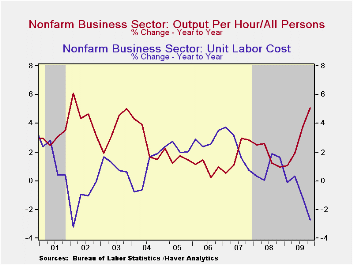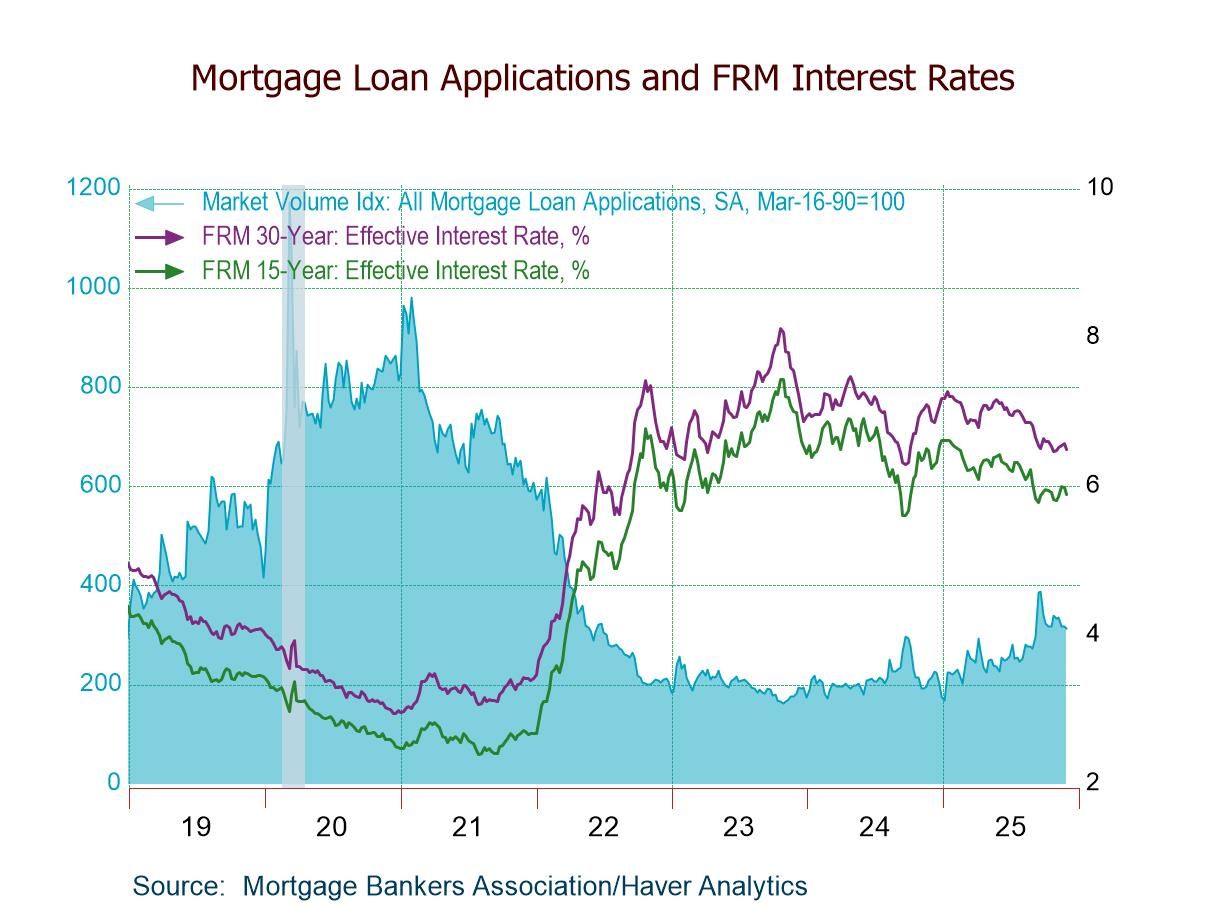 Global| Feb 04 2010
Global| Feb 04 2010Strong U.S. Worker Productivity Drives Down Costs
by:Tom Moeller
|in:Economy in Brief
Summary
Worker productivity surged during the fourth quarter. Employers kept a tight hold on costs as the economic recovery began to take hold. The 6.2% (AR) jump in 4Q productivity followed a downwardly revised 7.2% 3Q gain but it pulled [...]
 Worker
productivity surged during the fourth quarter. Employers kept a tight
hold on costs as the economic recovery began to take hold. The 6.2%
(AR) jump in 4Q productivity followed a downwardly revised 7.2% 3Q gain
but it pulled growth for the full year up to 3.0%, the fastest since
2003. A 6.0% gain in 4Q productivity was the Consensus
expectation.
Worker
productivity surged during the fourth quarter. Employers kept a tight
hold on costs as the economic recovery began to take hold. The 6.2%
(AR) jump in 4Q productivity followed a downwardly revised 7.2% 3Q gain
but it pulled growth for the full year up to 3.0%, the fastest since
2003. A 6.0% gain in 4Q productivity was the Consensus
expectation.
The rise in productivity came as output jumped
7.2%. The gain was an acceleration from 2.3% growth during 3Q but it
nevertheless left full-year output down 3.6% Hours-worked
(employment times hours) rose 1.0% but for the year fell 6.4% as a
tight rein on costs was kept. Growth in compensation costs
decelerated sharply from 3Q. The 1.5% gain was the slowest since a 1Q
 decline and
the 2.0% rise was the slowest since 1994.
decline and
the 2.0% rise was the slowest since 1994.
Stronger productivity and weaker compensation growth pulled 4Q unit labor costs down 4.4%. Except for a slightly greater decline during 1Q, it was the sharpest decline since 2002 and it was enough to pull costs down 0.9% for the year, the first decline since 2002.
The surge in 4Q worker productivity growth reflected vibrancy in the factory sector where employers held a notably tight rein on costs. Productivity gained 7.8% following an upwardly revised 14.4% 3Q jump. For the year, productivity rose 1.4% after a 0.8% rise during 2008. Recent gains have been prompted by quarterly output growth which turned sharply positive by 3Q and continued up at a 6.1% annual rate at yearend. Nevertheless, output fell 11.0% for the year. Hours worked similarly fell but by lesser amounts. Compensation slipped 0.2% but the 4.8% gain earned was the fastest since 2003. Strong productivity and gains in compensation combined to lower unit labor costs by 7.4%, about the same as during 3Q but for the year unit costs rose 3.4%, the strongest rise since 2000.
The productivity & cost figures are available in Haver's USECON database.
| Nonfarm Business Sector (SAAR,%) | 4Q '09 | 3Q '09 | 2Q '09 | 4Q Y/Y | 2009 | 2008 | 2007 |
|---|---|---|---|---|---|---|---|
| Output per Hour | 6.2 | 7.2 | 6.9 | 5.1 | 3.0 | 1.8 | 1.9 |
| Compensation per Hour | 1.5 | 5.6 | 6.8 | 2.2 | 2.0 | 2.8 | 4.2 |
| Unit Labor Costs | -4.4 | -1.5 | 0.0 | -2.8 | -0.9 | 1.0 | 2.3 |
| Manufacturing Sector | |||||||
| Output per Hour | 7.8 | 14.4 | 6.8 | 6.5 | 1.4 | 0.8 | 3.2 |
| Compensation per Hour | -0.2 | 6.5 | 6.5 | 3.0 | 4.8 | 3.0 | 4.3 |
| Unit Labor Costs | -7.4 | -7.0 | -0.3 | -3.2 | 3.4 | 2.2 | 1.1 |
Tom Moeller
AuthorMore in Author Profile »Prior to joining Haver Analytics in 2000, Mr. Moeller worked as the Economist at Chancellor Capital Management from 1985 to 1999. There, he developed comprehensive economic forecasts and interpreted economic data for equity and fixed income portfolio managers. Also at Chancellor, Mr. Moeller worked as an equity analyst and was responsible for researching and rating companies in the economically sensitive automobile and housing industries for investment in Chancellor’s equity portfolio. Prior to joining Chancellor, Mr. Moeller was an Economist at Citibank from 1979 to 1984. He also analyzed pricing behavior in the metals industry for the Council on Wage and Price Stability in Washington, D.C. In 1999, Mr. Moeller received the award for most accurate forecast from the Forecasters' Club of New York. From 1990 to 1992 he was President of the New York Association for Business Economists. Mr. Moeller earned an M.B.A. in Finance from Fordham University, where he graduated in 1987. He holds a Bachelor of Arts in Economics from George Washington University.






